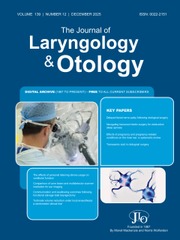No CrossRef data available.
Article contents
Determination of conventional and high frequency hearing thresholds of infantry and artillery
Published online by Cambridge University Press: 11 November 2024
Abstract
This study aims to assess the pure tone auditory thresholds in infantry and artillery personnel to evaluate potential hearing loss and ascertain the effect of military service duration on these thresholds.
A total of 108 participants, comprising 35 infantry, 30 artillery personnel, and 43 healthy volunteers as controls, underwent conventional and high-frequency pure tone audiometry. Thresholds were measured across frequencies of 125–16000 Hz.
Artillery personnel exhibited significantly higher hearing thresholds compared to controls across various frequencies, particularly in the right ear. Infantry personnel showed elevated thresholds at specific frequencies in the left ear. Correlations were observed among age, years of service and number of shots fired.
Repetitive exposure to firearm noise can lead to significant hearing loss across a broad frequency range. Implementing comprehensive ear protection programs for military personnel is crucial to mitigate these risks.
- Type
- Main Article
- Information
- Copyright
- © The Author(s), 2024. Published by Cambridge University Press on behalf of J.L.O. (1984) LIMITED.
Footnotes
Ceren Karaçaylı takes responsibility for the integrity of the content of the paper.


